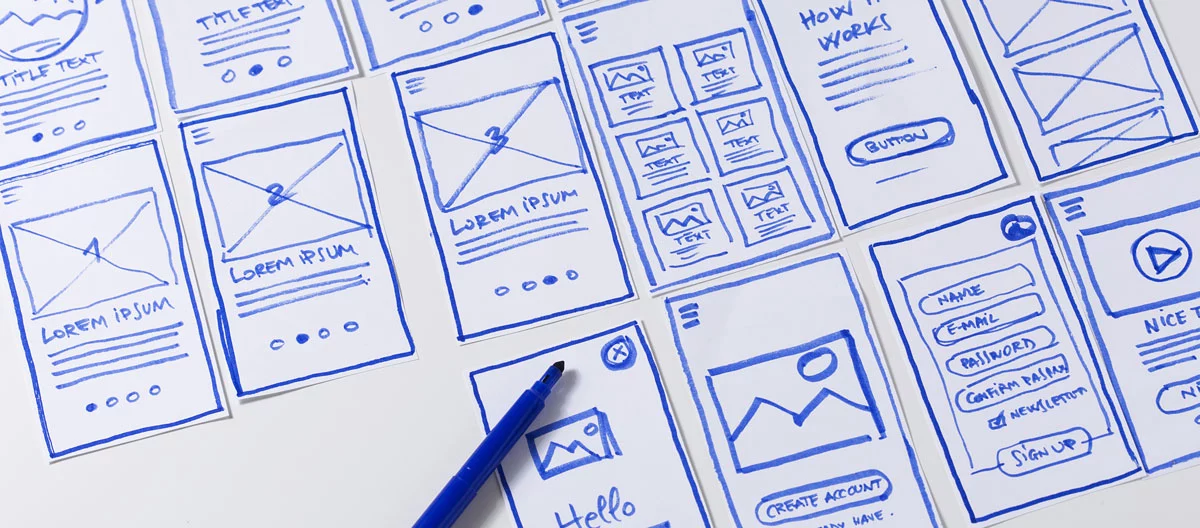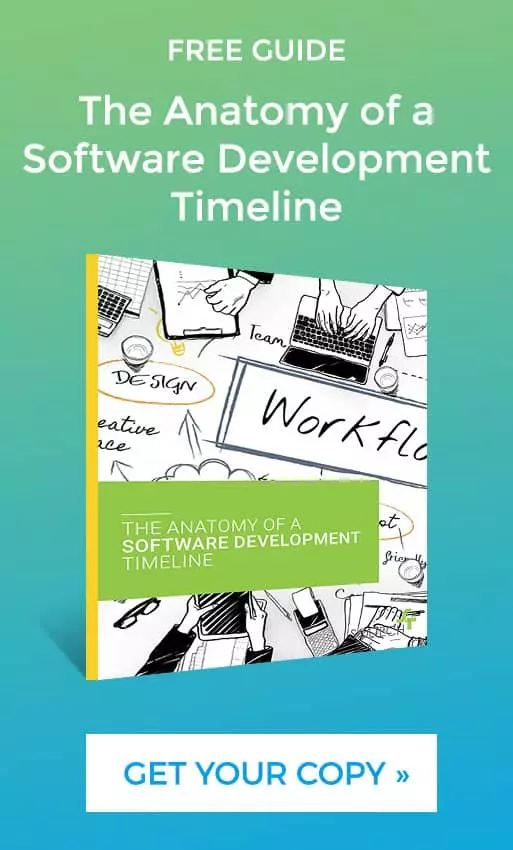
How Long Does It Take to Design Custom Software?
By Ann Mooney
Designing custom software can be a time-consuming process, yet the best way to avoid lengthy implementation is to get started once you have a lucid idea of the important elements you want included. The key to successfully designed custom software centers around defining all of its possible requirements before any real work begins. As we’ve said before, successful applications aren’t just coded, they are engineered, which means that the best apps start with setting your goals and software requirements early on and clearly.
There are three primary stages custom software development must go through before moving onto the implementation stage: solution, creative, and technical, which I will describe in more detail shortly. Before we get into that, let’s quickly review the primary reasons for having custom software designed. Which scenario fits your situation? Do you have more than one of these needs?

To increase functionality that will help streamline specific processes: For example, security is a significant reason to upgrade existing software, becoming more and more critical each year. The side benefit of adding or increasing customized security and other features is that while one area is being upgraded, functionality improvements can also be made at the same time.
- To integrate new or existing applications to work together seamlessly: Even with the most current software applications, there comes a time when you will want to integrate several other applications which becomes paramount to the efficiency of the company. Otherwise, the inefficiencies of old software combined with manual activities will continue to slow down the business and may contribute to errors.
- To answer to new business processes and requirements: Old software that doesn’t meet your company’s new standards and operations is going to present problems that will get larger as technology continues to improve. It is the “don’t get left behind” situation. Software design that only does half the work will make it difficult to compete in the digital world.
- To scale up the business’ capabilities: Most business types can’t expand their customer base while using software intended for one-off use. Custom software will be necessary to increase productivity, provide information at quicker speeds, reduce costs, allow collaboration, and provide improved customer service.
Solution Design (3-4 weeks)
The solution design stage, when thoroughly conducted, will give you the confidence to know your application has been analyzed from every angle to ensure nothing has been forgotten. For example, you and your tech team will want to make sure the software is going to completely solve the original need. This is a requirement-gathering period to ensure the end result is a full representation of the things you need the software to do. The more specific, the better. For example, rather than saying you want inventory software that integrates with your eCommerce website, list the exact functions you need the software to accomplish, such as:
- Update each vendor in real-time
- Update the website as the vendors respond with delivery dates for additional products
- Provide automatic product feature and price updates from each vendor
- Send emails to customers on the wait-list for upcoming product availability
Once the functions are established, your tech team will begin translating these requirements into the technical design stage.
Technical Design (1-2 weeks)
Once the decision is made to proceed and build, there is still a level of engineering work that needs to be done before development and implementation, testing, and maintenance. This technical design software stage is critical because if any aspects were overlooked in the solution design stage, it will be up to the technical team to identify them. If all of the parameters are not carefully reviewed, there could be time delays and cost overages during implementation and/or testing, which can often be avoided during this phase.
Creative Design (1-3 Weeks)
The creative design stage varies as much as the solution and technical design stages. This is when the application gets visually designed, therefore the length of time it takes will depend on how many pages and screens are to be included. A consumer-facing app generally takes longer as it requires much more creative design than one that is internal-facing only. Software that will be used by consumers will include marketing styles, colors, logos, and page layouts that are designed to be easy to find and use. A creatively designed home page will set the tone for the appearance of all other pages, but generally, each page category will be an offshoot. For example, blogs, portfolios, products, testimonials, etc. may have a few of the key style elements, but will be unique to their categories.

Once the creative designs are approved, a timeline for creative and technical implementation will be scheduled.
In Summary
Custom software design can take anywhere from 4 weeks to 8 weeks, depending on the size and intricacies of the apps’ requirements. In many situations, the creative and technical designs can be accomplished simultaneously, shortening the timeline to 3 to 7 weeks.
The most important aspects of all three phases are identifying the specific needs of the software’s functions and features, its technical aspects, and its layout and visual appearance. Our technical team dives in to uncover the unexpected necessities that may arise during the implementation process. It is a collaborative effort that you can trust when working with our team of experts.
For a more detailed look at how long the entire software design process can take, download our popular eBook below.
Ann Mooney
Director of Business Development Ann Mooney is the Director of Business Development at SOLTECH, and has over 30 years in Sales and Account Management in the Technology, Telecommunications, and Medical Industries. Ann’s key specialties are building long-term business relationships, results-driven sales, and account management.
Ann Mooney is the Director of Business Development at SOLTECH, and has over 30 years in Sales and Account Management in the Technology, Telecommunications, and Medical Industries. Ann’s key specialties are building long-term business relationships, results-driven sales, and account management.
Ann joined SOLTECH in 2016, she works directly with SOLTECH’s clients to help find them the best technology solutions for their business. Ann utilizes her strategic leadership and proactive problem-solving skills to continually grow SOLTECH’s business and ensure excellent customer service.
With her years of experience in the technology industry, Ann likes to share her expertise to educate her audience on the enhancement of workplace productivity and growth through software solutions in her articles. Her insights offer advice on important considerations for creating custom software, including initial steps, development costs, and timelines, as well as the advantages of collaborating with a skilled software development team.





